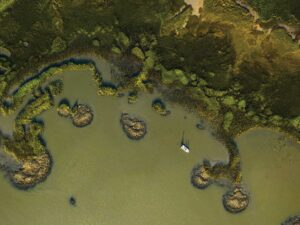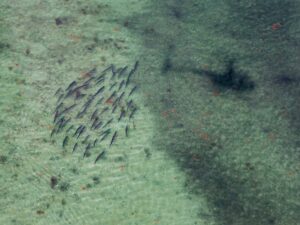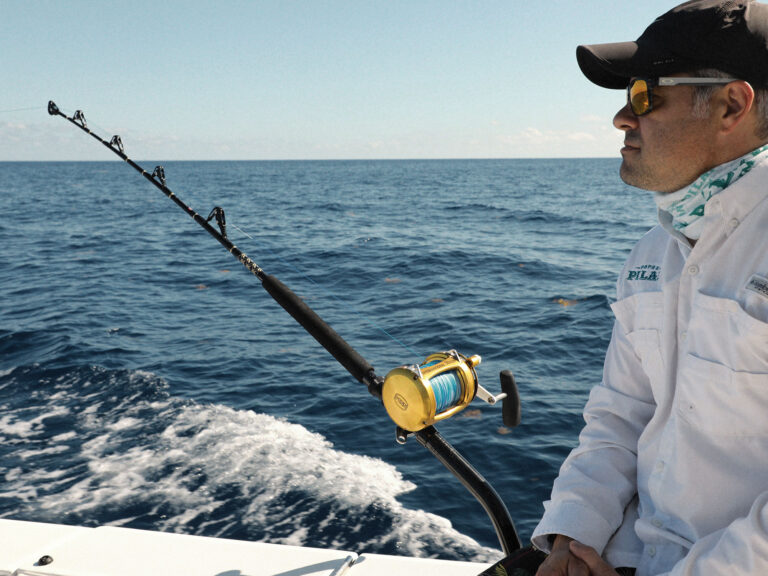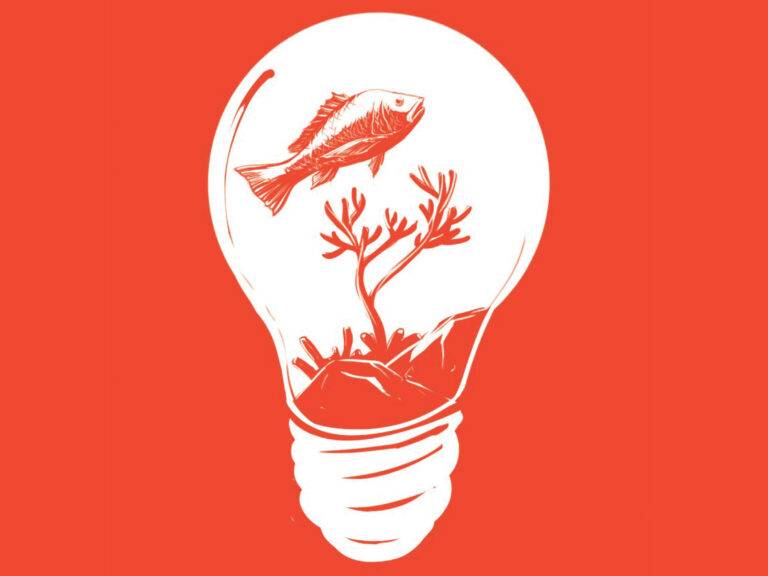
With daybreak erasing the night lights on oil platforms and slowly revealing the beauty of the Louisiana bayou, anticipation fills my first redfishing morning as Capt. Dan Skermetta runs his shallow-water skiff toward a line of roseau cane, where he says a few thousand redfish await our popping corks and jigs.
Aside from targeting reds inshore, our trip itinerary also includes sampling the offshore fishing in the Gulf of Mexico, where tuna and other big game fill anglers’ dance cards. But the redfish come first, along with the speckled trout and several other inshore species that often crash the party.
“Squish a mullet on the jig hook under the bobber, and pitch it right into that little slot between the reeds,” Skermetta says. “Wait a bit, then pop it loud and hang on!” That’s the last bit of advice Chuck Smock and I get before his popping cork goes under, he sets the hook, and our guide lunges for the landing net.
I loft a soft rainbow cast into the slot, and rip the popping cork at the exact instant a redfish strikes, nearly yanking the rod out of my hand. With net in hand, Skermetta follows Smock’s fish around the boat and turns briefly to shoot me a reminder: “I said hang on, remember?”
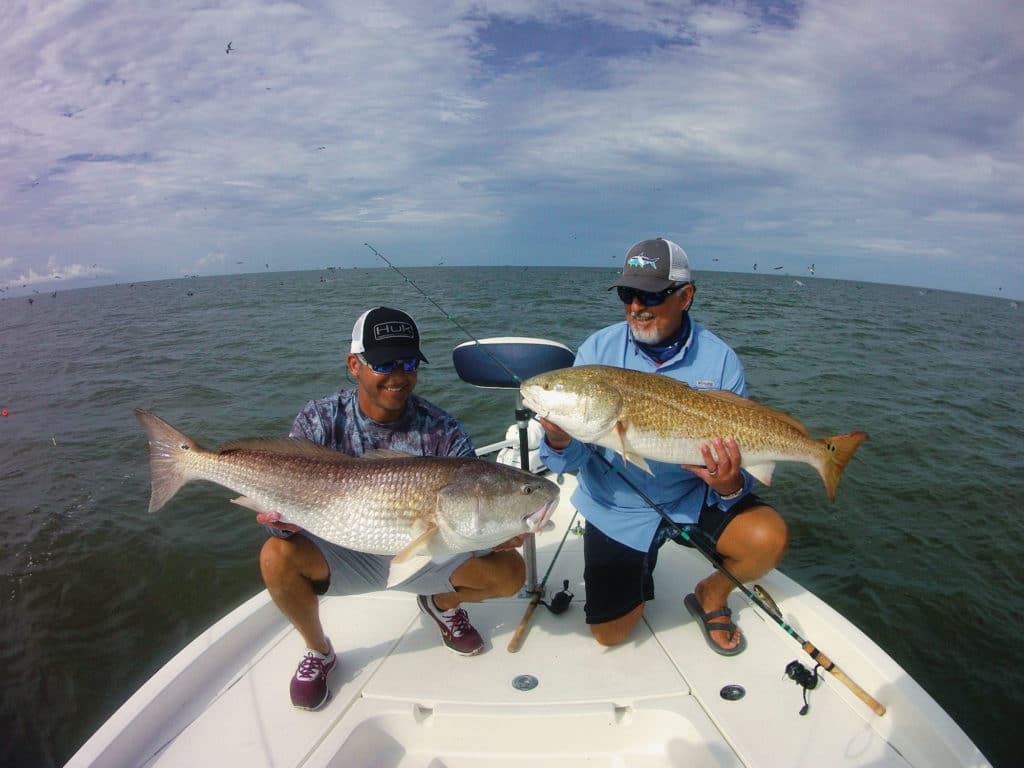
Twice Smock and I dance the over-under tango, stepping over seats and gear, but no one falls overboard, and soon the doubleheader—which includes Smock’s magnificent 25-pounder—comes aboard, a nice welcome to Venice, the last stop south at the mouth of the Mississippi River, some 77 miles southeast of New Orleans, where a queue of marinas and commercial docks are filled with fishing-charter boats, trawlers, shrimpers, oysters barges and floating lodges.
Two Playing Fields
A short boat ride away from Venice, the salt marshes, with their countless bays, gator ponds, channels and bayous, where river and seawater mix, host a wide range of species that includes trout, black drum, flounder, sheepshead, pompano and others, along with arguably the best redfish fishery on Earth. Offshore devotees run south to the levee at South Pass, past the barrier islands and into the Mississippi Delta, stop to cast-net some live bait, then continue to deeper Gulf waters for an equally varied lineup of game that includes kingfish, cobia, and red and mangrove snappers around nearshore oil rigs, plus yellowfin tuna, dolphin, wahoo, and even billfish around or between large, floating oil platforms anchored farther offshore.
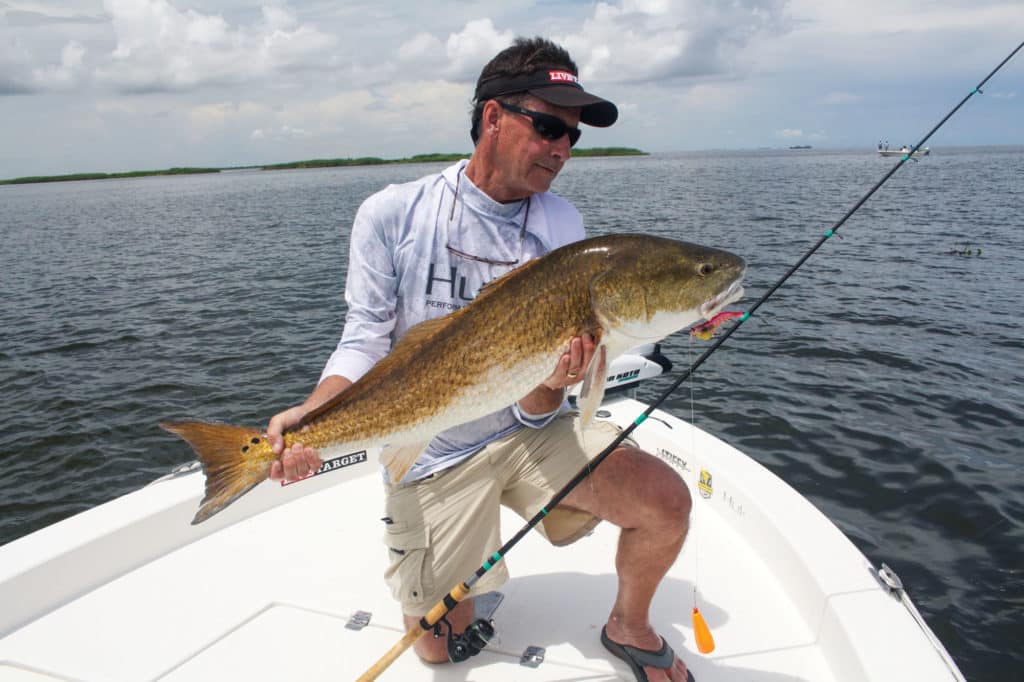
Day One Sampler
As tempting as it is, offshore fishing will have to wait. First, we were stalking redfish. In summer, the big ones are in deeper water, on the outside of the Mississippi River Delta, but in spring, lots of reds are in the skinny, brackish water where we can use spinning rods to cast gold spoons, spinnerbaits, and jigs tipped with cut bait, shrimp or plastic grubs, and fly-fish for tailers that practically dare us to reach them with our shrimp imitations.
Our first day is action-packed. We catch plenty of fish, some huge, blind-casting to the edge of roseau cane jungles, sight-casting to schools along oyster beds, and sneaking into fly-casting range of feeders with their heads down and their tails waving through the surface.
Popping-cork-and-jig combinations are the favored marsh rig in almost every fishing situation. So, initially, Skermetta rigged us with 5- to 6-inch dish-faced corks that made enough noise and surface disturbance to attract hungry reds. Leaders were kept short, 15 to 36 inches, depending on the depth. These rigs proved quite productive when cast tight to the reeds, where redfish frequently forage, but sight-casting with spinning and fly gear to schools of tailing reds in a foot or two of brown water was absolutely electrifying.

Ongoing Fireworks
The redfish parade continued the next day. With Dan Armitage ready at the bow, Darren Angelo eases his 23-footer center-console over a few inches of muddy water stirred by dozens of reds tailing just ahead. “Cast in front of the pod,” Angelo whispers. “Let the fly sink, wait on the feeders, and don’t false-cast over the school.”
Too late. The fly line’s shadow flashes over the tailers, the school blows up, and Armitage swears. But Angelo spots another dozen tails on the other side of the flat. This time, Armitage makes a great cast, lets his shrimp fly settle, and hooks up. Shouting an attaboy, I pick up a spinning rod, throw a gold spoon toward a swirl, and connect as well. We double up on redfish again!
Read Next: Catching Redfish On Topwater Lures
On our way back to the dock, after another action-filled day in the marsh, we spot a commercial shrimp boat anchored near an oyster-shell dump. The crew is asleep, waiting for nightfall to drop nets. Angelo idles within range and tells us to cast close to the shrimper. Reds, he says, hang around shrimp boats, feasting on morsels that fall out of the nets. Three casts and Armitage brings our day to a close with another good fish.
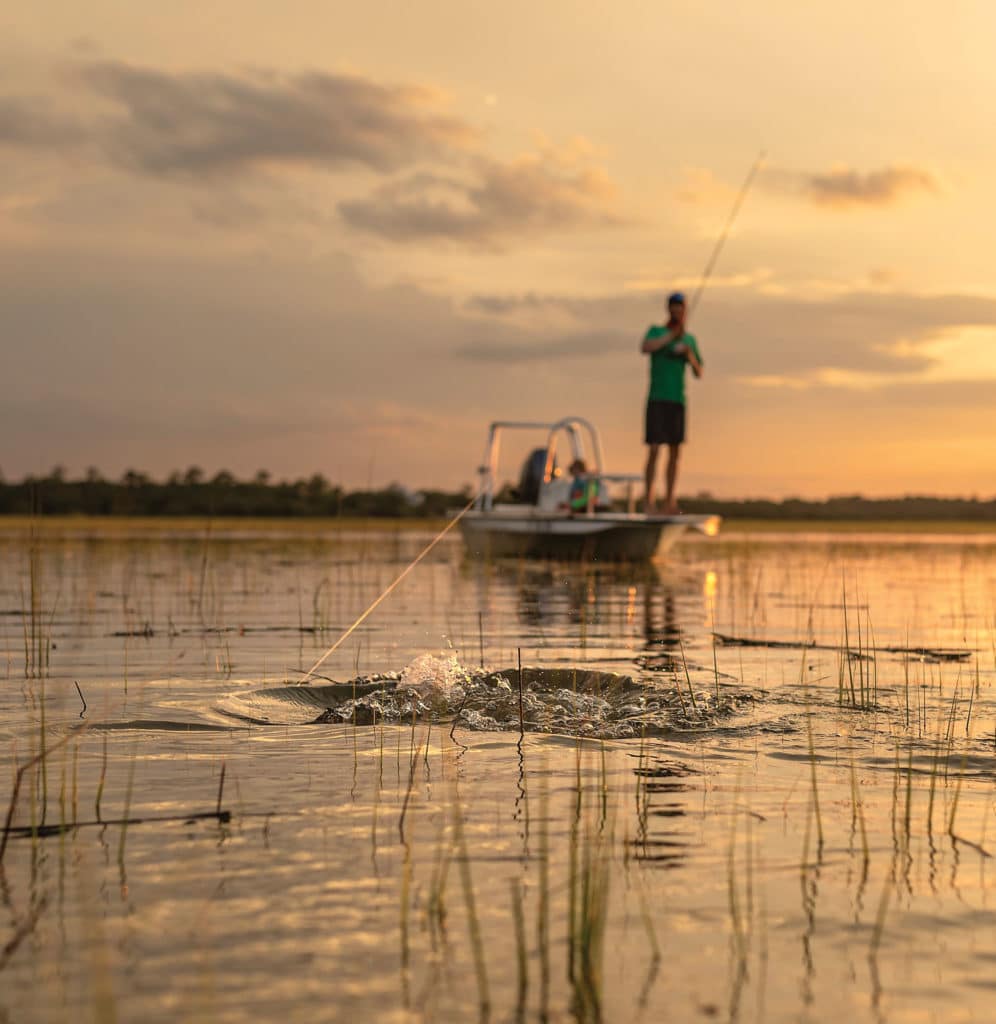
Seasonal Movements
Venice is a year-round redfish destination, but where the hottest action occurs depends on the time of year.
March through June, the big bulls, along with the more common 7- to 15-pounders, move into the shallow bays around the Mississippi Delta, and the salt marshes north of Venice and nearby Empire. Spring tides flood the marshes with redfish food—finger mullet, pinfish, pogies, cocahoes, shrimp and small crabs.
When reds move into the bays, they really go on the feed, prowling grass flats, and hunting around cane and grass shorelines to pack on the pounds.
The spring schools stay in skinny water until late June, when the intense summer heat depletes oxygen levels in the marshes, pushing many of the reds out to deeper, cooler waters in the delta, around the chain of barrier islands and shoals closer to the open Gulf.
In August and September, slow-trolling along the barrier islands is a good way to find feeding schools in the deeper water. Once a school is located, dead-sticking baits—rigging mullet, menhaden or small crabs with a 1/2- or 1-ounce sliding sinker on the leader to hold them on the bottom—produces multiple hookups. Both trolling and dead-sticking from a stationary boat continue to take redfish into the fall.
Read Next: Louisiana Delta Fishing
During the mild winters of south Louisiana, redfish action continues but in a reverse pattern. As the day progresses, winter reds move from deep water into the shallows. Afternoons casting along barrier-island beaches can be memorable, I’m told. In December and January, after the annual spawning run fades and big reds go on a feeding binge, the fishing is often smoking-hot.
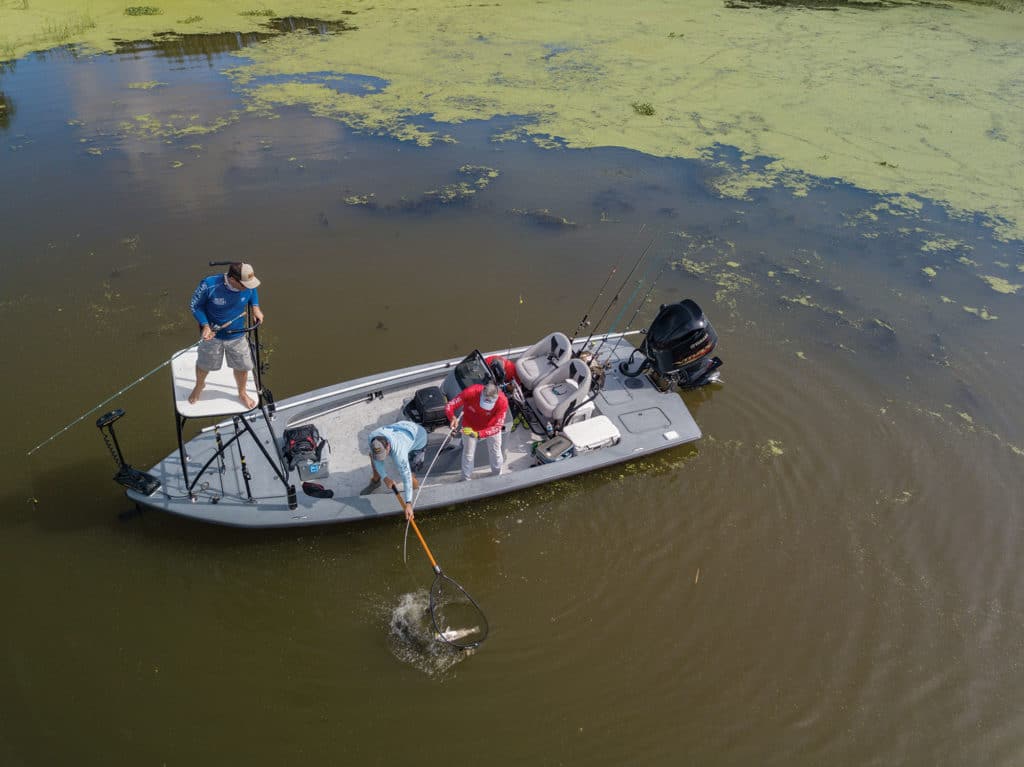
When You Go
Venice and nearby Empire are convenient bases for anglers looking to sample the amazing redfishing in the region. Both have multiple motels and lodges, plus restaurants that keep fishermen-friendly hours and offer sack lunches. Fishing-charter services abound, and DIY boating anglers will find the necessary bait-and-tackle shops and boat ramps.
Planner
What: Redfish
Where: Venice, Buras and Empire, Louisiana
When: Great action year-round. The marshes produce best March through June; look for bull reds around barrier islands in December and January.
Who: Anglers with flats or bay boats and good charts of the area. The following lodges and guides can make your fishing trip to the area worry-free:
Lodging
Venice, Louisiana
SWC Sportsmans Lodge, 601-466-0152, southernwaycharters.com/sportsmans-lodge
Lighthouse Lodge & Villas, 504-534-2522, lighthouselodgevenice.com
Empire, Louisiana
Delta Marina, 504-657-5116, thedeltamarina.com
Fishing Charters
Capt. Dan Skermetta, 504-481-2320, dbum60@yahoo.com
Reel Tite Fishing Guide Service, 504-419-7344, reeltite.com
Venice Guide Service, 504-481-7529, veniceguideservice.com

Tackle Box
Rods: 7-foot medium-action, 8- to 15-pound spinning; 9-foot, 7- to 9-weight fly
Reels: 3000- to 5000-class spinning; saltwater-grade fly reels for 7- to 9-weight lines
Lines: 12- to 30-pound braid for spinning; 7- to 9-weight, weight-forward fly lines, floating or with short sink tip
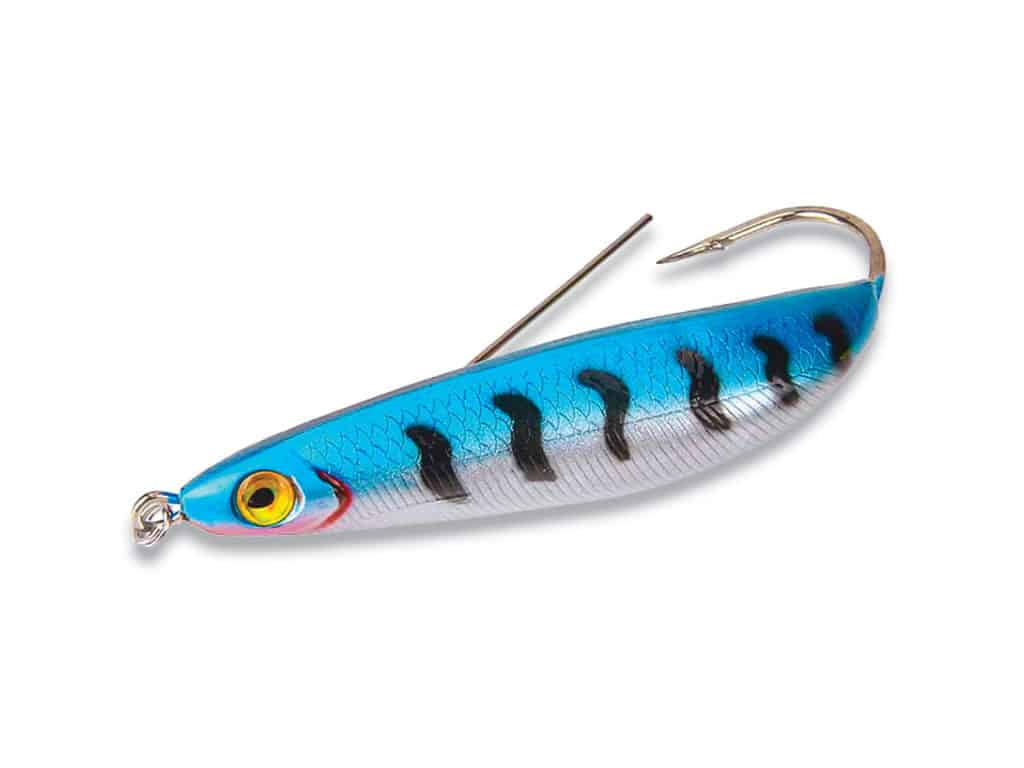
Baits: Live or cut mullet, menhaden, cocahoe minnows, shrimp, and blue and mud crabs
Lures/Flies: Gold Johnson Silver Minnow or similar weedless spoons, jig heads with soft-plastics, brightly colored poppers, and weighted crustacean and baitfish fly patterns

Other: 3- to 6-inch popping corks


